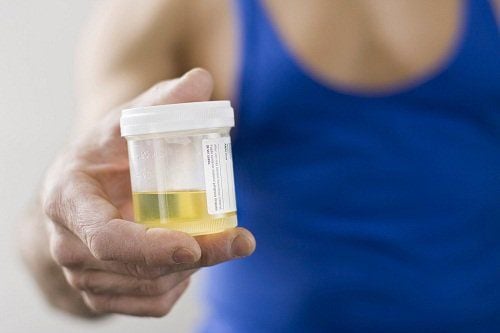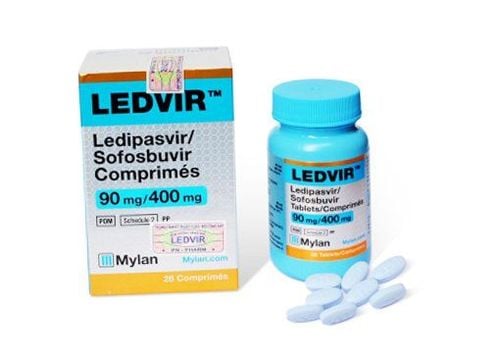This is an automatically translated article.
The article was professionally consulted by Associate Professor, Doctor, Doctor Le Ngoc Hung - Head of Laboratory Department - Microbiologist - Laboratory Department - Vinmec Central Park International General Hospital.Protein plays an important role when participating in many activities of the body such as building blocks of many organs, hormones and enzymes, creating colloidal pressure, contributing to maintaining pH balance, and protecting the body. Quantitative Total Protein test will help detect abnormal levels of protein in the body that can be the cause of a number of diseases.
1. What is the quantitative total protein test for?
Total blood protein is made up of 3 components: albumin, globulin and fibrinogen (only found in plasma) in which albumin and fibrinogen are synthesized only in the liver and globulin is produced by immune cells. There are two types of quantitative tests for total protein: blood protein tests and urine protein tests.In blood tests: Quantification of total protein is determined as the amount of albumin and globulin in the serum. Serum albumin accounts for up to half of the proteins found in plasma and has the following functions:
Maintains oncotic pressure in the blood to help keep water from leaking outside the blood vessel walls Involved in protein synthesis peripherally through the supply of amino acids Play a role in binding and transporting some substances produced in the body's metabolism such as fatty acids, bilirubin, steroid hormones and other active substances throughout the body Protein globulin has many Different sizes, weights and functions, classified according to the way of migration on electrophoresis including transport proteins, enzymes, complement and immunoglobulins (IgA, IgD, IgE, IgM and IgM). With the above functions, the quantification of whole blood protein will help evaluate diseases of alkaline - acidosis, inflammatory response or metabolic disorders in the body.
In the urine test In a normal person, urine will have no or very little protein due to the mechanism of reabsorption in the kidney. Therefore, when there is protein in the urine, the kidneys may have a kidney disease condition that causes a large amount of protein to be excreted in the urine. Quantitative tests of total protein in the urine help confirm that condition and help initially identify abnormal disorders in the body.

Xét nghiệm định lượng protein toàn phần trong nước tiểu
2. What is the limit for total protein in blood and urine?
In serum, normal protein index is in the range of 6-8 g/dl, of which albumin accounts for 3.5-5.0 g/dl, the rest is globulin.
In the urine, normal protein excretion will be less than 150 mg and albumin less than 20 mg every 24 hours. For pregnant women, when the amount of protein in the urine exceeds 300 mg / day, it can be suspected that preeclampsia - eclampsia is a serious disease in pregnancy.
In some cases, the amount of total protein in the blood or urine can also fluctuate abnormally but not due to disease, specifically the following cases:
People who exercise intensely People with dietary restrictions high protein diet Due to age or stress Due to pregnancy Women using hormonal contraceptives Complications from surgery.
3. When is a quantitative test for total protein?
Quantitative testing of total protein can be done during a routine health check-up or when the patient has symptoms of gastrointestinal, liver or kidney disease, specifically:
Loss of appetite, weight loss loss of control Fatigue Edema Difficulty urinating Nausea or vomiting Manifestations of malnutrition .

Nôn là biểu hiện bệnh lý đường tiêu hóa, cần được xét nghiệm định lượng protein toàn phần
4. What does the quantitative total protein test result mean?
If total protein is high: If this number occurs continuously, health conditions such as:
Inflammation caused by an infection, such as viral hepatitis or HIV infection Cancer, for example multiple myeloma Disease Chronic kidney or liver disease Patient is dehydrated If total protein is low: may be due to the following health conditions:
Malnutrition Malabsorption disorders Liver disease Kidney disease: nephrotic syndrome or glomerulonephritis Heart failure congested . Albumin / globulin ratio In addition to total serum protein, it is also possible to calculate the Albumin to globulin (A/G) ratio of the blood, Due to a number of conditions that can affect the albumin or globulin of the blood:
A low A/G ratio may be caused by overproduction of globulins, decreased production of albumin, or loss of albumin, in the following cases:
Autoimmune disease Cirrhosis of the liver, including inflammation or cirrhosis Multiple myeloma Renal syndrome Damage A high A/G ratio can be attributed to:
Poor production of antibodies Blood cancer, or cancer of the bone marrow.
To register for examination and treatment at Vinmec International General Hospital, you can contact Vinmec Health System nationwide, or register online HERE.
MORE:
What is proteinuria, what does it mean in the diagnosis of urinary kidney disease? What is blood protein? What is the normal number? What disease does low blood protein indicate?













